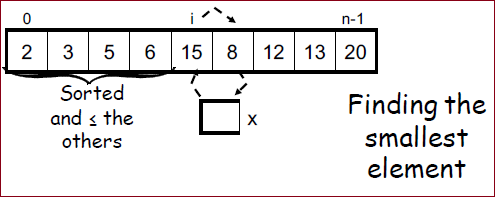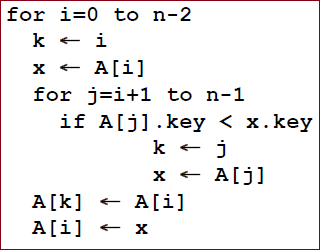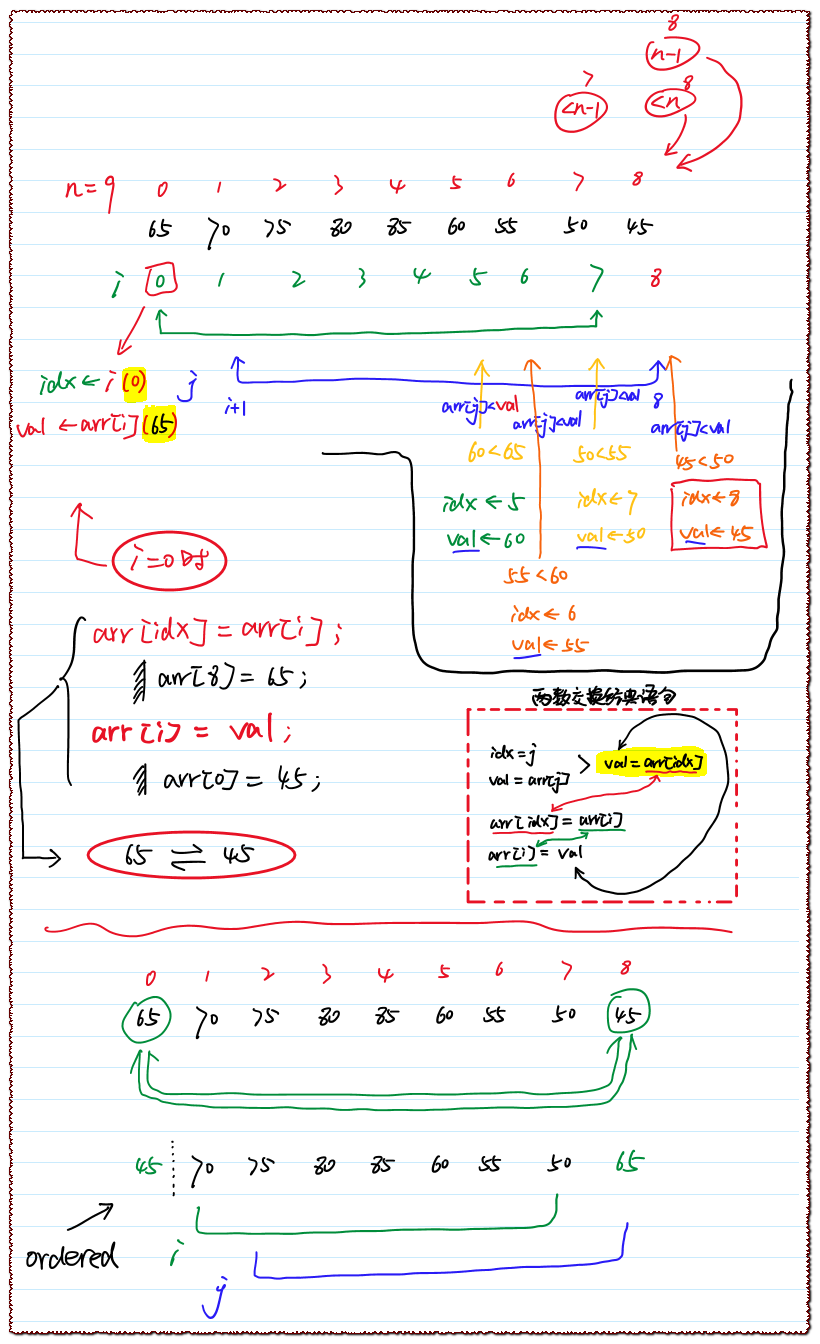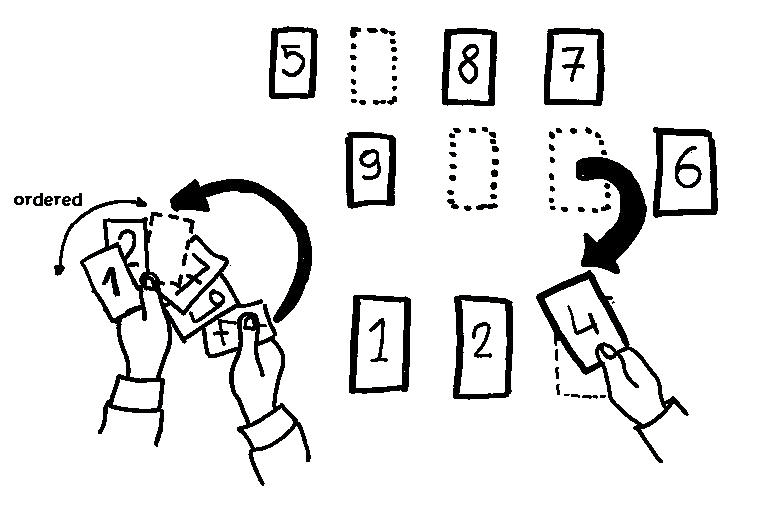[Coding022] Sort - 选择排序
简单选择排序
Ben
2024/01/06
Get the knowledge flowing and circulating! :)
目录
标题:选择排序
选择排序(Selection sort)是一种简单直观的排序算法。
它的工作原理如下:
首先在未排序序列中找到最小(大)元素,存放到排序序列的起始位置;
然后,再从剩余未排序元素中继续寻找最小(大)元素,然后放到已排序序列的末尾。
以此类推,直到所有元素均排序完毕。
选择排序的主要优点与数据移动有关。如果某个元素位于正确的最终位置上,则它不会被移动。
选择排序每次交换一对元素,它们当中至少有一个将被移到其最终位置上,因此对
个元素的表进行排序总共进行至多 次交换。 在所有的完全依靠交换去移动元素的排序方法中,选择排序属于非常好的一种。
——维基百科
选排思想


※ 典型过程手绘过程分析

Java语言代码实现
xxxxxxxxxx771import java.util.Scanner;2
3// 这是一个类,名叫Solution4public class Solution {5 /**6 * 简单选择排序(Selection Sort)7 */8 public static void main(String[] args) {9 // TODO Auto-generated method stub10 System.out.println("hello, my t!");11
12 Scanner input = new Scanner(System.in);13
14 int n = input.nextInt();15
16 int[] arr = new int[n];17 for (int i = 0; i < n; i++) 18 {19 arr[i] = input.nextInt();20 }21
22 for (int e : arr) {23 System.out.print(e + " ");24 }25 System.out.println("\n--------------");26
27 Solution sol = new Solution();28 sol.Selection_Sort(arr, arr.length);29
30 for (int e : arr) 31 {32 System.out.print(e + " ");33 }34 return;35 }36
37 public void Selection_Sort(int[] arr, int n) 38 {39 for (int i = 0; i < n - 1; i++) 40 {41 // 依次从前向后取一个数42 int idx = i;43 int val = arr[i];44
45 // 对比当前数后面所有的数,找到最小的那个数,记下val和idx46 for (int j = i + 1; j < n; j++) 47 {48 if (arr[j] < val) 49 {50 idx = j;51 val = arr[j];52 }53 }54 arr[idx] = arr[i]; // 把arr[i]位置腾出来(安置好arr[i]位置原来的值)55 arr[i] = val; // 赋值该有的值56 }57 }58
59}60
61/*62测试样例: 635 645 4 7 9 665
669 6765 70 75 80 85 60 55 50 4568
6910 7010 20 30 40 50 60 70 80 90 10071
7220 7312 54 63 54 87 52 49 32 65 48 90 27 30 65 3 9 6 14 18 074
7510 7646 32 13 24 10 91 67 88 79 5577*/运行结果
复杂度
| 平均时间复杂度 | |
|---|---|
| 最坏时间复杂度 | |
| 最优时间复杂度 | |
| 空间复杂度 | 总共 |
| 最佳解 | 偶尔出现 |
复杂度分析
(对于数组而言的选择排序)需要比较的次数(Number of
comparisons)Does not depend on the initial order of the elements
(对于数组而言的选择排序)需要移动的次数(Number of
movements)边界情况 情况 复杂度 MIN (already in order) MAX (in reverse order)


